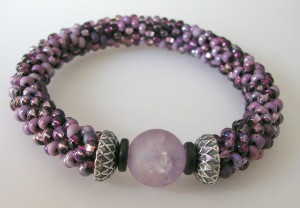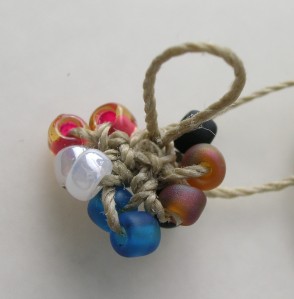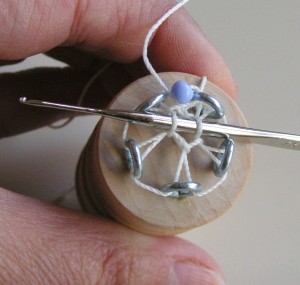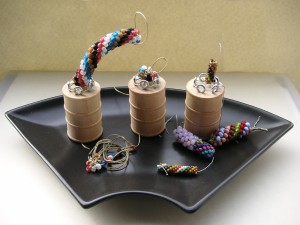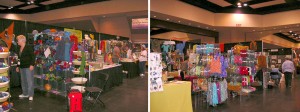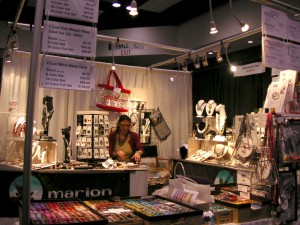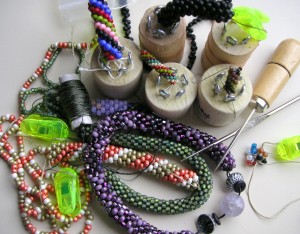When I learned to make bead crochet ropes a few years ago, I found it to be beyond frustrating! In my class, the instructor (Stephanie Riger – a wonderful jewelry designer and friend), made it look so easy… but I was totally unable to create the starting base rows. I was not the only one – Stephanie is a great teacher, but she had to create the first few rows for many of us. Once started, it took a while to learn the technique, but I didn’t find it too difficult to learn the basics, and now I can zip thru it! But the first few rows continued to be difficult – alot of rework, much frustration, and ripping out the first few rows. When I was asked to teach classes in bead crochet, I knew there had to be a better way to make the first few rows, so that it was easier and faster to get to the fun part!! So I did a lot of experimenting and prototyping, and finally came up with the Starter Jig.
So why is it so frustrating to start bead crochet ropes??
Just look at it… to start, you crochet a ring of beads, and then add stitches thru the ring. This is 2 rows of bead crochet rope (5 beads around), done in size 6 beads. It can be difficult to tell where you would put the crochet hook, and where the next stitch should be, especially for someone learning. Although I tried to straighten it out for the photo, this is a real mess of thread and beads. So how does the jig help…?
Creating bead crochet ropes is the same technique, whether you use the Starter Jig or manually create a starter ring. It’s the first few rows that are so frustrating, because there is no structure. Using the Starter Jig, you are able to easily stabilize the first few rows, so that you can position the crochet hook, and add stitches in the correct orientation. Once you have about 2 inches of beads, you remove the jig, and continue crocheting and finishing off your project.
In this photo, you can compare what 2 rows looks like when on the Starter Jig, or when done in a manual bead ring. For reference, I also show the same pattern of beads after about 2 inches – if this was a “real” project, the rope would be ready to be removed from the jig.
When I go to shows and events, I am able to demo the jig, showing customers the benefits: it’s easy to use, the starting rows are stable, and when you remove the jig, the starting rows are clean and neat (no more ripping out starter rows!). But I can’t always be there, so I created a mini display with a few pieces in process.
You can see the 3 comparison items shown above, and also a few sample pieces showing the ropes using varying size beads. Personally, I think people are a little crazy to use the tiny size 11’s (shown on the jig at the right), but alot of people asked if it could be done, so I had to try it out, and it works just fine…
I make most of my bracelets in size 6 beads, but I also like using size 8’s which are a bit smaller. This bracelet has been a favorite of mine, even though I no longer have it… the beads are vibrant, and the center focals and silver endcaps accent the pattern beautifully.
If you’re interested in buying a jig (it comes with an emailed 20+ page pdf tutorial, with over 50 photos), please CLICK HERE to visit my Etsy store (or you can click on my Etsy menu, in the right side), and check out the section on tools.
